How Much Does A Car Weigh? Complete Weight Guide by Model & Type
“Your car weighs HOW much?” The tow truck driver stared at me like I’d grown a second head. He’d been trying to lift my Honda Civic with equipment rated for 2,500 pounds. Problem was, my Civic actually weighed 2,900. That expensive mistake taught me something crucial: most people have no clue what their car really weighs.
After 20 years running a shop with a certified CAT scale, I’ve weighed over 5,000 vehicles. From tiny Smart cars at 1,800 pounds to the absurd GMC Hummer EV pushing 9,500, I’ve seen it all. And here’s what shocks everyone: your car probably weighs 500-1,000 pounds more than you think.
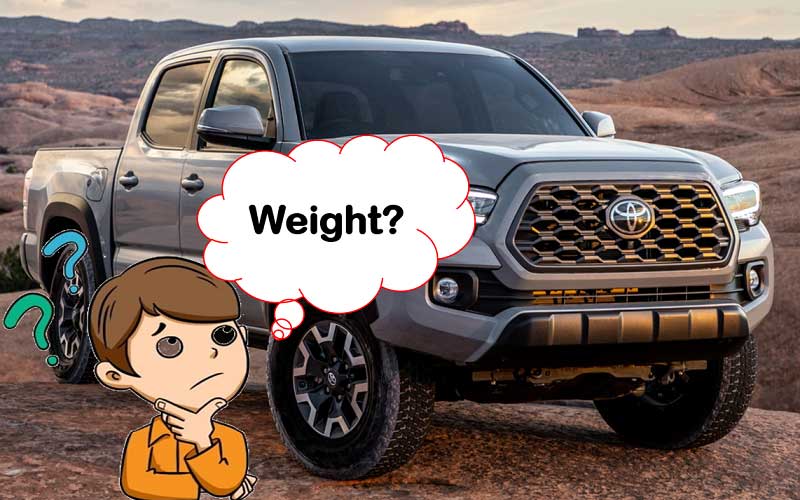
Quick Answer (At a Glance)
Most modern cars in the U.S. weigh 3,000-4,200 pounds curb weight. Here’s the breakdown:
- Compact cars: 2,900-3,300 lbs
- Midsize sedans: 3,300-3,800 lbs
- Small crossovers: 3,200-4,000 lbs
- Midsize SUVs: 4,000-5,000 lbs
- Full-size SUVs: 5,400-6,500+ lbs
- Half-ton pickups: 4,500-6,000 lbs
- Heavy-duty trucks: 6,000-7,500+ lbs
- EVs: Add 500-1,500 lbs to similar gas vehicles
But these are averages. Your specific car? Let me show you exactly how to find it.
Why Weight Matters (Real-World Examples)
Last month, three weight-related disasters rolled into my shop:
The $4,000 Transmission: Customer tried towing a boat with his SUV. “But the dealer said it could tow 3,500 pounds!” True, but his Highlander already weighed 4,400 pounds. Add family and gear, he exceeded his brake capacity. Cooked transmission.
The Bridge Fine: F-250 owner got an $850 ticket crossing a 10,000-pound limit bridge. His truck plus load? 11,200 pounds. “I didn’t know trucks weighed that much!”
The Tire Blowout: Tesla Model X on standard tires instead of XL-rated. Extra weight caused a 70 mph highway blowout. Could’ve been fatal.
Weight affects everything:
- Braking distance: Increases 5-7 feet per 1,000 pounds
- Fuel economy: Drops 1-2% per 100 pounds
- Towing capacity: Must know curb weight to calculate safely
- Tire wear: Wrong load rating = premature failure
- Legal limits: Bridges, ferries, some parking garages
- Registration fees: Weight-based in CA, VA, KY, and others
Key Terms (Let’s Get These Straight)
Before diving into numbers, understand these terms. I see confusion daily:
Curb Weight: Your car with all fluids, full gas tank, but no people or cargo. This is your baseline.
GVWR (Gross Vehicle Weight Rating): Maximum safe weight including everything – car, people, cargo, tongue weight. Never exceed this.
Payload: GVWR minus curb weight. How much you can legally and safely carry.
GCWR (Gross Combined Weight Rating): Maximum for vehicle plus trailer plus all cargo.
GAWR (Gross Axle Weight Rating): Maximum weight each axle can handle.
Think of it like a backpack. Curb weight is the empty pack. GVWR is how much the straps can hold before breaking. Payload is how much stuff you can put in.
What Affects a Car’s Weight
Ever wonder why a 2024 Civic weighs 900 pounds more than a 1990 model? I’ve tracked this evolution:
Vehicle Class/Size
- Subcompact: 2,400-2,900 lbs base
- Compact: 2,900-3,300 lbs base
- Midsize: 3,300-3,800 lbs base
- Full-size: 3,800-4,500+ lbs base
Drivetrain Differences
- FWD to AWD: +150-300 lbs
- 4-cylinder to V6: +200-300 lbs
- Gas to hybrid: +300-500 lbs
- Gas to full EV: +500-1,500 lbs
Options That Add Weight
- Panoramic sunroof: +80-120 lbs
- Third-row seats: +150-200 lbs
- Larger wheels: +5-15 lbs per wheel
- Off-road package: +200-400 lbs
- Tow package: +50-150 lbs
Safety Evolution
My 1990 Civic had 2 airbags. A 2024 model has 10. Each airbag system adds 15-20 pounds. Crumple zones, side-impact beams, and reinforced pillars add another 300-400 pounds. Worth it? Absolutely. I’ve seen the crash test differences.
Complete List of Weights by Popular U.S. Models
Important Note: These are curb weight ranges for recent model years (2022-2024). Your exact weight depends on year, trim, engine, drivetrain, and options. I’ll show you how to find your specific number in the next section.
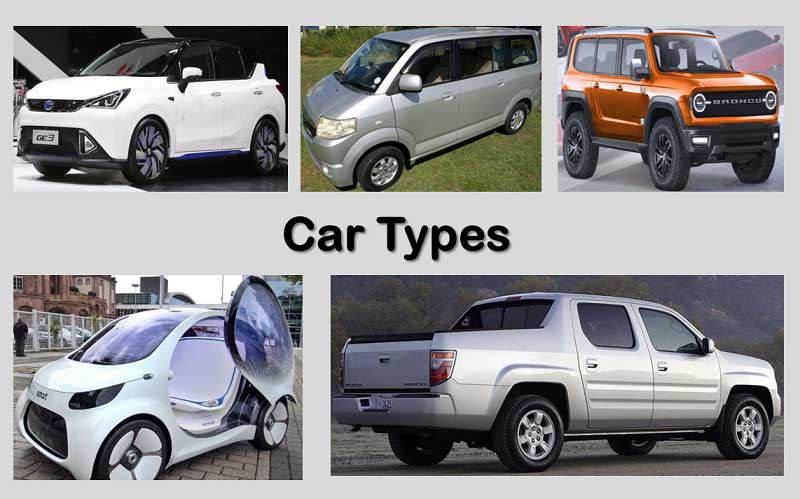
Sedans and Cars
Compact Cars
- Honda Civic: 2,877-3,077 lbs
- Toyota Corolla: 2,910-3,150 lbs
- Mazda3: 2,945-3,355 lbs
- Nissan Sentra: 2,866-3,058 lbs
- Volkswagen Jetta: 2,888-3,200 lbs
- Hyundai Elantra: 2,725-3,075 lbs
- Kia Forte: 2,762-3,098 lbs
Midsize Sedans
- Honda Accord: 3,239-3,605 lbs
- Toyota Camry: 3,310-3,825 lbs
- Nissan Altima: 3,212-3,462 lbs
- Hyundai Sonata: 3,120-3,613 lbs
- Kia K5: 3,148-3,534 lbs
- Mazda6: 3,222-3,560 lbs (discontinued but common)
- Chevrolet Malibu: 3,135-3,457 lbs
Full-Size Sedans
- Dodge Charger: 3,961-4,586 lbs
- Chrysler 300: 4,013-4,380 lbs
- Genesis G90: 4,555-5,038 lbs
- Mercedes S-Class: 4,398-5,313 lbs
Luxury/Performance Sedans
- BMW 3 Series: 3,582-4,138 lbs
- Mercedes C-Class: 3,516-4,134 lbs
- Audi A4: 3,417-3,847 lbs
- Genesis G70: 3,611-3,883 lbs
- Lexus IS: 3,583-3,891 lbs
- Cadillac CT5: 3,616-4,123 lbs
Sports Cars
- Ford Mustang: 3,532-3,825 lbs
- Chevrolet Camaro: 3,351-4,120 lbs
- Dodge Challenger: 3,858-4,448 lbs
- Mazda MX-5 Miata: 2,341-2,453 lbs
- Toyota GR86/Subaru BRZ: 2,811-2,881 lbs
- Porsche 911: 3,126-3,790 lbs
- Chevrolet Corvette: 3,366-3,670 lbs
SUVs and Crossovers
Small Crossovers
- Honda CR-V: 3,337-3,763 lbs
- Toyota RAV4: 3,370-3,925 lbs
- Mazda CX-5: 3,375-3,825 lbs
- Nissan Rogue: 3,454-3,660 lbs
- Subaru Crosstrek: 3,117-3,298 lbs
- Volkswagen Tiguan: 3,737-4,009 lbs
- Hyundai Tucson: 3,325-3,838 lbs
- Kia Sportage: 3,387-3,908 lbs
Midsize SUVs (2-Row)
- Honda Passport: 4,229-4,437 lbs
- Jeep Grand Cherokee: 4,513-5,356 lbs
- Ford Edge: 3,847-4,515 lbs
- Hyundai Santa Fe: 3,649-4,253 lbs
- Chevrolet Blazer: 3,810-4,266 lbs
- Nissan Murano: 3,916-4,165 lbs
Midsize SUVs (3-Row)
- Toyota Highlander: 4,155-4,595 lbs
- Honda Pilot: 4,036-4,685 lbs
- Ford Explorer: 4,345-4,890 lbs
- Kia Telluride: 4,112-4,482 lbs
- Hyundai Palisade: 4,245-4,587 lbs
- Mazda CX-90: 4,486-4,917 lbs
- Subaru Ascent: 4,271-4,603 lbs
- Volkswagen Atlas: 4,235-4,690 lbs
Full-Size SUVs
- Chevrolet Tahoe: 5,355-5,772 lbs
- Ford Expedition: 5,443-5,692 lbs
- Toyota Sequoia: 5,765-6,185 lbs
- GMC Yukon: 5,379-5,796 lbs
- Cadillac Escalade: 5,635-5,993 lbs
- Jeep Wagoneer: 5,960-6,420 lbs
- Nissan Armada: 5,322-5,856 lbs
- Infiniti QX80: 5,399-5,933 lbs
Luxury Crossovers
- Lexus RX: 4,222-4,740 lbs
- BMW X3: 3,902-4,453 lbs
- Mercedes GLE: 4,564-5,467 lbs
- Audi Q5: 3,858-4,398 lbs
- Genesis GV70: 3,847-4,204 lbs
- Acura MDX: 4,255-4,701 lbs
- Lincoln Aviator: 4,464-5,737 lbs
Off-Road SUVs
- Jeep Wrangler 2-door: 3,781-4,449 lbs
- Jeep Wrangler 4-door: 4,018-5,222 lbs
- Ford Bronco 2-door: 4,391-4,842 lbs
- Ford Bronco 4-door: 4,499-5,258 lbs
- Toyota 4Runner: 4,400-4,805 lbs
- Chevrolet Colorado ZR2: 4,750-5,393 lbs
Pickup Trucks
Midsize Pickups
- Toyota Tacoma: 4,255-4,800 lbs
- Ford Ranger: 4,145-4,441 lbs
- Chevrolet Colorado: 4,150-4,940 lbs
- GMC Canyon: 4,150-4,940 lbs
- Nissan Frontier: 4,315-4,837 lbs
- Honda Ridgeline: 4,436-4,510 lbs
- Jeep Gladiator: 4,650-5,050 lbs
Full-Size Pickups (Half-Ton)
- Ford F-150: 4,021-5,697 lbs
- Chevrolet Silverado 1500: 4,257-5,155 lbs
- RAM 1500: 4,798-5,372 lbs
- Toyota Tundra: 5,260-5,940 lbs
- GMC Sierra 1500: 4,257-5,240 lbs
- Nissan Titan: 5,101-5,798 lbs
Heavy-Duty Pickups
- Ford F-250: 5,677-7,538 lbs
- Ford F-350: 6,010-7,737 lbs
- Chevrolet Silverado 2500HD: 5,853-7,442 lbs
- Chevrolet Silverado 3500HD: 6,231-7,619 lbs
- RAM 2500: 5,988-7,431 lbs
- RAM 3500: 6,289-7,680 lbs
- GMC Sierra 2500HD: 5,853-7,442 lbs
- GMC Sierra 3500HD: 6,231-7,619 lbs
Electric Vehicles
Electric Sedans
- Tesla Model 3: 3,862-4,250 lbs
- Tesla Model S: 4,561-4,883 lbs
- BMW i4: 4,290-4,850 lbs
- Mercedes EQE: 4,862-5,247 lbs
- Lucid Air: 4,630-5,236 lbs
- Hyundai Ioniq 6: 3,891-4,414 lbs
- Genesis Electrified G80: 4,862 lbs
Electric SUVs
- Tesla Model Y: 4,154-4,555 lbs
- Tesla Model X: 5,185-5,531 lbs
- Ford Mustang Mach-E: 4,394-4,920 lbs
- Hyundai Ioniq 5: 3,968-4,662 lbs
- Kia EV6: 3,891-4,502 lbs
- BMW iX: 5,659-5,769 lbs
- Mercedes EQS SUV: 5,710-5,945 lbs
- Audi e-tron: 5,302-5,754 lbs
- Genesis GV60: 4,071-4,515 lbs
- Volkswagen ID.4: 4,295-4,665 lbs
Electric Trucks
- Ford F-150 Lightning: 6,015-6,893 lbs
- Rivian R1T: 7,148-7,173 lbs
- GMC Hummer EV: 9,046-9,640 lbs
- Chevrolet Silverado EV: 8,532 lbs
- Tesla Cybertruck: 6,603-6,843 lbs
Minivans
- Honda Odyssey: 4,398-4,725 lbs
- Chrysler Pacifica: 4,330-4,894 lbs
- Toyota Sienna: 4,560-4,865 lbs
- Kia Carnival: 4,387-4,697 lbs
EV vs Gas: What Changes
- Batteries add mass. Expect +500–1,500 lb.
- Handling can still feel planted thanks to low battery placement.
- Brakes and tires work harder; choose proper load‑rated tires.
Why Cars Got Heavier
- Safety gear: airbags, crash structures, side beams (+biggest chunk)
- Tech: infotainment, sensors, insulation
- Comfort: larger seats, more sound deadening
- Emissions control: added hardware
Yes, many 90s cars were lighter. No, they were not safer.
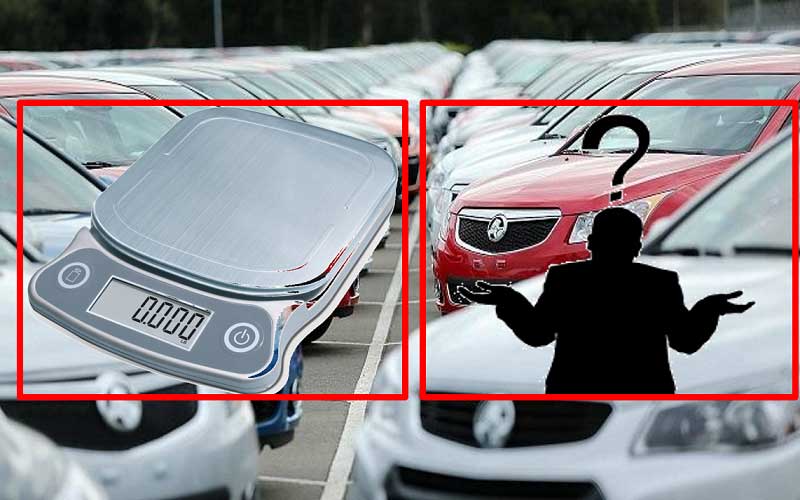
How to Find Your Exact Weight (4 reliable ways)
- OEM site: Search “Year Make Model curb weight site:[manufacturer].com”
- Owner’s manual/window sticker: Specs section often lists it
- Dealer/VIN lookup: Parts/service can pull by VIN/trim
- Certified scale (most accurate): CAT scales run ~$13–15
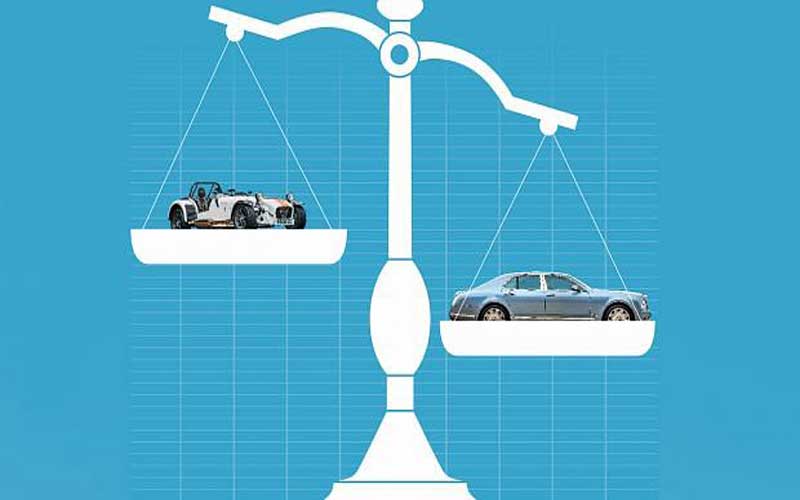
How to Weigh Your Car (easy steps)
- Remove cargo you don’t want counted; full tank if you want “curb‑like.”
- Drive onto a CAT scale (truck stops like Pilot/Flying J).
- Tell the clerk it’s a personal weigh.
- Get a ticket with axle weights and total. Done.
Myths Busted
- “Heavier is always safer.” Not always. Structure and crash design matter most.
- “Weight doesn’t hurt performance.” It does. Rough rule: +100 lb can add ~0.1 sec to 0–60.
- “All SUVs are heavy.” Some subcompact SUVs weigh less than midsize sedans.
- “EVs break parking garages.” Myths. Many gas trucks weigh more than most EVs.
Real‑World Impacts I See Weekly

Fuel economy (F‑150 I tracked for a year):
- Empty: 22 MPG
- +500 lb cargo: ~20 MPG
- Towing 5,000 lb: ~12 MPG
Tire life:
- At/under payload: ~50,000 miles
- ~20% overloaded: ~25,000 miles
- Chronic overload: ~15,000 miles
Brake life (shop averages):
- Compact cars: 60k–80k miles
- Midsize SUVs: 40k–60k miles
- Full‑size trucks: 30k–50k miles
Special Cases
Towing
- Payload = GVWR – curb. Count people, cargo, hitch, and tongue weight.
- GCWR must cover vehicle + trailer + all cargo.
- Mountain towing? Leave margin for heat and altitude.
Performance
- Easy weight wins: remove spare (‑30 lb), lighter wheels (‑5 lb/corner), carbon hood (‑20 lb). Small changes add up.
Hauling/Moving
- Know payload. Most half‑tons carry ~1,500–2,000 lb. Subtract people first, then gear.
Regional (GEO) Notes for U.S.
- Fees: Some states (e.g., CA, VA, KY) tie fees to weight or class.
- Ferries/tolls: Weight and length can change prices.
- Snow states: Sandbags help traction but eat payload. Count them.
- Mountain West: Heavy loads + altitude = heat. Watch temps and brakes.
- Coastal: Salt adds corrosion risk; armor and racks add weight—plan for it.
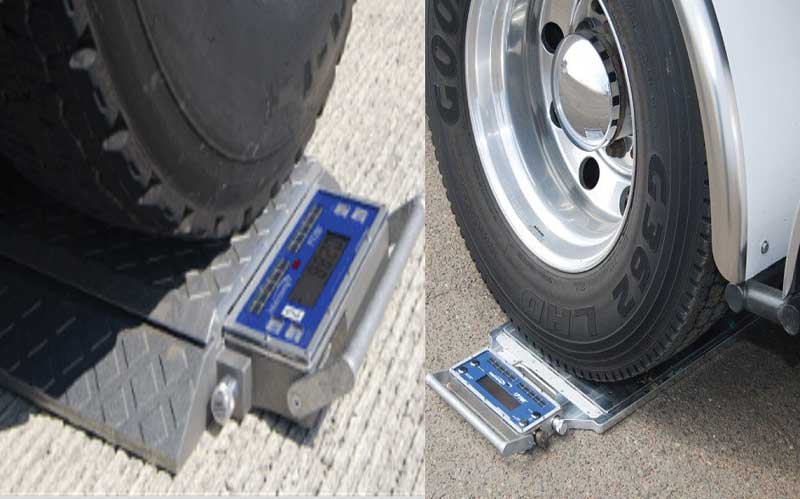
Final Tips + Checklist
- Learn the terms: curb, GVWR, payload, GCWR, GAWR.
- Get your exact curb weight (OEM or CAT scale).
- Read the door jamb for GVWR/GAWR. Do the payload math.
- Towing? Check GCWR and tongue limits. Don’t guess.
- EVs: Use proper XL/EV‑rated tires and watch load capacity.
- Keep margin. A little under the limit is safer than a little over.
FAQs Related to Car Weight
- How much does a car weigh?
Most cars are 2,800–3,500 lb. Compacts: 2,500–3,000. Midsize sedans: 3,000–3,500. SUVs: 4,000–6,000. Pickups: 4,000–7,500+. EVs run heavier than gas models. - Is curb weight the same as GVWR?
No. Curb is the car with fluids and fuel, no people or cargo. GVWR is the max allowed loaded weight. Never exceed GVWR. - How do I calculate payload?
Payload = GVWR – curb weight. Example: GVWR 6,050 lb – curb 4,850 lb = 1,200 lb for people, cargo, and tongue weight. - Where do I find GVWR/GAWR?
Check the driver’s door jamb certification label. Most cars don’t list curb weight there. - Why are EVs heavier?
Batteries. Packs of 60–100 kWh often add 700–1,500 lb. That affects braking, tires, and sometimes fees. - Do options really change weight?
Yes. Third rows, big wheels, tow packages, armor, panoramic roofs, and bigger stereos add up fast. - How do mountains affect things?
Your weight stays the same, but power and cooling take a hit. Heavy loads run hotter on steep grades. Leave margin. - Does a roof box or bike rack count?
Yes. The rack plus whatever’s on it counts toward payload. Hitch tongue weight counts toward vehicle weight too. - Is the bathroom‑scale trick any good?
No. Vehicle weight distribution is complex. Use a certified scale for real numbers. - How much does an SUV weigh?
Compact: 3,200–3,900 lb (e.g., CR‑V ~3,337–3,763). Midsize: 4,000–5,000 lb (Highlander ~4,155–4,595). Full‑size: 5,000–7,000 lb (Tahoe ~5,355–5,772). - How do I get my exact number?
OEM specs, owner’s manual, dealer/VIN lookup, or a CAT scale ticket. The scale is the most accurate.
Bottom Line
Most folks underestimate by 500–1,000 lb. That mistake leads to blown tires, weak brakes, and bad towing calls. Spend 15 minutes to learn your real weight. Read the door label, check the manual, or grab a $15 scale ticket. Numbers matter.
That customer who burned a transmission towing? He learned his SUV was 5,500 lb before people and gear. He upgraded his tow rig and hasn’t had an issue since. Got your year/make/model or VIN? Share it, and I’ll help pull curb, GVWR, payload, and GCWR so you can drive (and tow) with confidence.

